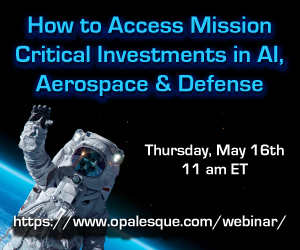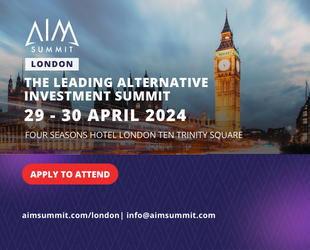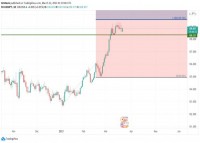|
Opalesque Industry Updates -
Below is an article titled " The Investor's Burden", by Chuck Hage, Director of Compliance at Mohican Financial Management, LLC, New York. While convertible arbitrage continues to gather positive notoriety due to high 2009 returns, many truths regarding the strategy have been forgotten in the face of high risk/high levered funds looking for short term gains. As convertarb returns to its roots as a consistent low risk strategy, experienced managers are being recognized again as long term gains replace the hysteria of last year's events. *** THE INVESTOR’S BURDEN - By Charles Hage Hedge fund investors should be alert. Some fundamental practices in wide use contain significant levels of misguidance that undermine the quality of the investment process. Broad corrective action may be too ambitious to propose here, given that long-standing behavior is involved, but visiting a few important values and attitudes might help to ease the investor’s burden. Recent financial and market turmoil, while costly, provides a rare chance to raise awareness of poor investment practices before recovery exuberance smothers attention to the need for it. Reaffirming Active Management Ludicrous as it might appear to serious hedge fund investors, in the background of all securities investing the debate goes on about whether active management of an asset class portfolio is justified over passive investing. Studies of mutual fund aggregate performance in growth and value equities of small and large cap companies come down on both sides of the issue. Modern Portfolio Theory, the Capital Asset Pricing Model, and the Three Factor Model are invoked outside the limits of their usefulness to justify the buy-and-hold approach. Some evidence suggesting that mutual funds can’t beat indexes fosters doubt about active management that seems to be confirmed by the population of mutual funds, 70% of which have been suggested are index funds or closet indexers. All this can carry over to dampen hedge fund investing, especially if recent losses and ongoing uncertainties drive investors to avoid as many risk factors as possible and to expect lower return levels. The short response to such aggregate performance analyses and applications of portfolio theories could be “Who cares?” Whether a large group of managers underperforms, matches or outperforms an index, why should that influence an investor who seeks a standout manager within the group? When did average behavior of a manager group turn into general advice for investors? More to the point, hedge funds and hedge-like mutual funds exist not simply for active managers, but for active investors, and therein rests part of the investor’s burden. Allocation to asset classes, diversification within portfolios, and strategy selections all have merit, but an investor who rests on the scheme of investing and assigns it to professionals will not come to know asset managers, and the scheme will not substitute for finding even one good active manager. Time devoted to finding an active manager who outperforms peers is time well spent. Reinstalling the Portfolio Manager At the heart of hedge fund investing is the question of what role you want an active manager to play. Is it to endlessly pursue currently saleable strategies, skipping lightly from multi-strat and portable alpha to a newer buzz? Of course not, but the creativity that pours from the investment industry, and the dialogue promoting new and improved products through publications and conferences, can be distracting. To investors focused on the significance of the question, the right answer will always be “Best in class.” That simple phrase poses a tough challenge to every investor to find, qualify and invest with managers who are committed, reliable experts in their field at the level of securities trading. Meeting that challenge offers as much payoff and protection as infinite care in allocating and diversifying. It’s especially important when market stress threatens to boost correlation among asset classes, defeat risk management theory, and destroy massive amounts of capital. The rule the investor should use is to be personally responsible to confirm who is best in class, and to acquire the knowledge needed for that confirmation, whether or not investing directly in the hedge fund. Which brings us to due diligence. A first observation is that while questionnaires are well honed and site visits are de rigor, ground work is sometimes spotty. To illustrate, the question “Why did the manager pick his strategy?” is seldom asked at the start of discussions. While it’s understandable, for example, that experience on the sell side of a security class led to managing a strategy in the same class, it can make a difference to hear the extent to which the manager expresses passion and rationale for why the strategy is inherently attractive. It can convey a sense of deliberation in decision-making or a passive acceptance of a fait accompli, or perhaps reveal that the manager knows how to find and exploit inefficiencies repeatedly over the long term. In any structured due diligence process, this is the kind of Q&A that goes beyond standard questionnaires. More broadly, if due diligence has a dominant theme, it would be that managing a hedge fund is all about decisions, decisions, decisions. Every decision the manager makes in his portfolio and in his business reflects how opportunity and risk are measured and managed. The key point here is that any decoupling of opportunity and risk is cause for alarm, because no opportunity should be taken without knowing the risk, and no risk should be assumed without a presented opportunity. Further, manager decisions have a hierarchy that suggests an efficient order for due diligence. It’s best for a prospective investor to understand the range and emphasis a manager employs in securities and trades before dwelling on finer details, but investor inquiries often confound discussions by putting the cart before the horse. In other words, investor, ask yourself whether you have structured your initial inquiry and due diligence of a manager in a way that promotes your own best interest. Clearing the Field of View Screening the universe of hedge fund managers with performance criteria is a primary means to narrow the field of candidate managers. A number of large and popular hedge fund databases offer profiles of investment firms along with performance analysis of their funds. The databases are online, free and convenient to use, and accessible by qualified investors. This would all be good service to investors if the information content was reliable, which it is not. With the support of most publications and presentations on risk analytics, databases universally post Gaussian statistics on performance of individual hedge funds. This is a practice that leads investors to consider funds they should reject and reject funds they should consider. Monthly returns of a hedge fund are commonly distributed in a non-normal way, with a fat head – thin tail distribution being desirable. Standard deviation, applied under the false assumption of normality, is therefore summarily an invalid measure of good performance among hedge funds. Ignoring this fact, risk gurus and database providers compound their misinformation with various ratios incorporating standard deviation, somewhat in the fashion of making up in volume what is lost in price. Better than normal returns deserve better than Gaussian ratios, and investors are not getting what they should expect from hedge fund databases. It goes deeper than that. Risk-adjusted return may be a widely accepted measure of portfolio performance, but it makes little sense when viewed logically. Meaningfulness and usefulness are not served by using variability in results to adjust those very results, whether we’re talking about monetary return on invested capital or product yield from an industrial process. Variability can provide a rich body of information on which to base improvements in results, but not by combining results and variations into a single number and claiming it’s risk-adjusted. Would an industrial manager tout defect-adjusted yield?. A result is a result; if you accept it as accurate, why should anyone change it? Which brings us back to the core of the matter: decisions, decisions, decisions. Opportunity and risk are the opposing considerations before a decision is made, while return (gain or loss) is the result of that decision. Short of modeling and quantifying the process of every portfolio decision individually and collectively, the distribution of returns has long served as a proxy for a manager’s profile of opportunity and risk. While a valid measure exists to reduce a return distribution of any shape to a single number (e.g. Omega Ratio), its proponents are on the fringe of dialogue and use. Investors need to recognize them, bring them into the mainstream, and usher in revised thinking and language for performance analytics. Motivation There is no reason to assume current versions of methodology are 100% correct 100% of the time, or to assume professionals are less susceptible to following their small herd than amateurs are to following their large herd. That is ample motivation to question a few practices that burden investors. www.mohicanfinancial.com
|
Industry Updates
Many truths about convertible arbitrage have been forgotten - Mohican Financial
Tuesday, September 15, 2009
|
|





 RSS
RSS







